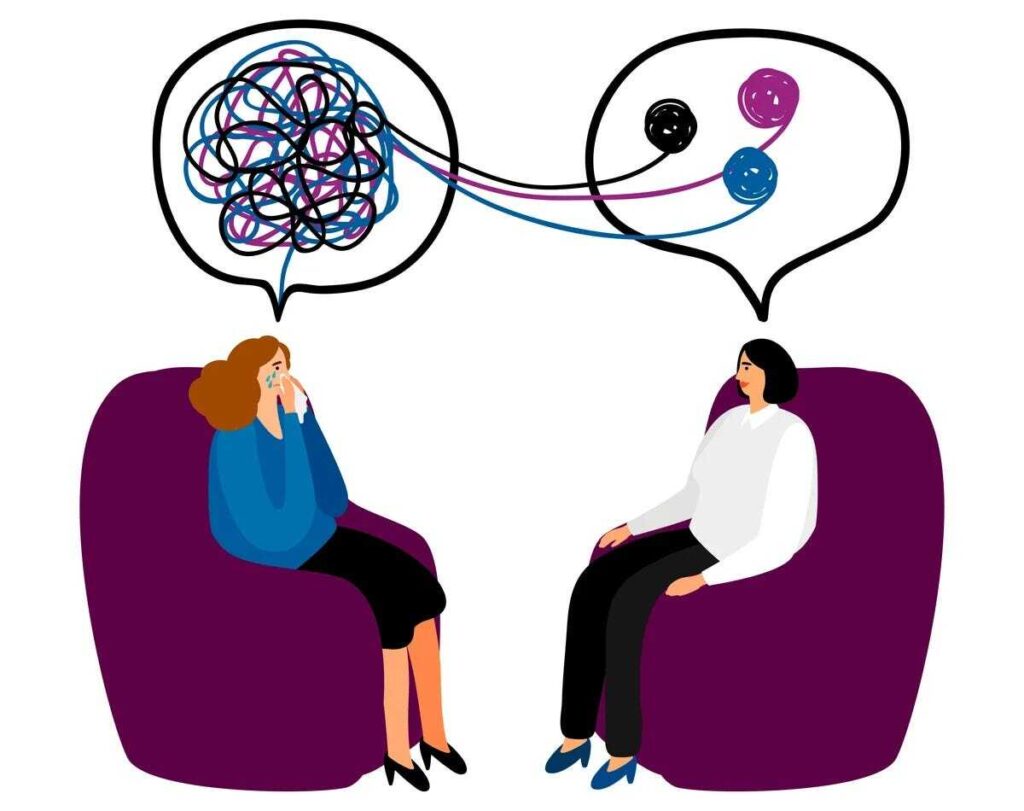Can Your Attachment Style Change? Exploring the Dynamics of Human Relationships

Attachment theory, originally proposed by John Bowlby in the mid-20th century, revolutionized the way psychologists understand human relationships. It explains how our early interactions with caregivers influence the way we form emotional bonds in adulthood. Based on these formative experiences, individuals tend to develop specific “attachment styles”—secure, anxious, avoidant, or disorganized—that shape their relationships throughout life.
But can your attachment style change? While early experiences are formative, recent research suggests that attachment styles are not set in stone. Life experiences, therapy, and intentional self-awareness can alter the way we relate to others. In this article, we will delve into the factors that can lead to a shift in attachment styles, the mechanisms underlying these changes, and how understanding attachment styles can empower personal growth and healthier relationships.
Understanding the Different Attachment Styles

Before exploring the possibility of change, it’s important to understand the various attachment styles. These styles represent a continuum of how individuals experience closeness and intimacy.
- Secure Attachment: Individuals with a secure attachment style feel comfortable with emotional intimacy and dependency. They tend to have healthier, more balanced relationships because they trust their partners and believe that they are worthy of love and support.
- Anxious Attachment: Those with an anxious attachment style often crave closeness and fear abandonment. They may become overly dependent on their partner’s validation and experience anxiety if they feel emotionally disconnected.
- Avoidant Attachment: People with an avoidant attachment style value independence and often struggle with emotional intimacy. They may distance themselves from partners to maintain a sense of autonomy, and they can appear aloof or emotionally unavailable.
- Disorganized Attachment: This style is often a result of trauma or inconsistent caregiving. Individuals with disorganized attachment may exhibit both anxious and avoidant behaviors, leading to chaotic, unpredictable relationships.
Given that these attachment styles emerge from early interactions with primary caregivers, can your attachment style change later in life?
The Stability of Attachment Styles Over Time
Research has shown that attachment styles tend to be relatively stable but not immutable. According to Bowlby and subsequent researchers, our attachment style is formed during early childhood, as we develop trust and security (or lack thereof) with our caregivers. This early blueprint for relationships can extend into adulthood and influence romantic, familial, and even platonic relationships.
However, studies indicate that while attachment styles are stable, they are not unchangeable. Life events, significant relationships, and personal development can all influence a shift in attachment patterns. So, can your attachment style change? The answer is yes—but the extent of that change depends on several factors, including your willingness to engage in self-reflection and seek healthier relationship patterns.
Factors That Influence Change in Attachment Styles

- Life Experiences and Relationships
Significant life events, such as a new romantic relationship, divorce, or the birth of a child, can prompt shifts in attachment style. For example, someone with an avoidant attachment style may find themselves becoming more securely attached in a relationship that fosters trust, open communication, and emotional support. Alternatively, someone with a secure attachment style may develop anxious or avoidant tendencies following a betrayal or traumatic relationship.This dynamic raises the question: Can your attachment style change due to relationship experiences alone? While these experiences play a role, change often requires a combination of self-awareness, emotional healing, and proactive work on the relationship. - Therapeutic Interventions
Therapy, particularly approaches like Cognitive Behavioral Therapy (CBT), Emotionally Focused Therapy (EFT), or psychodynamic therapy, can help individuals recognize their attachment patterns and work toward healthier relationship behaviors. A therapist can guide individuals in understanding how early childhood experiences shaped their attachment style and assist them in developing more secure attachment behaviors.For those wondering, “Can your attachment style change through therapy?” the evidence is promising. Research has shown that therapy can be highly effective in helping people identify and modify insecure attachment behaviors. As individuals become more conscious of their emotional patterns, they are better equipped to change them. - Mindfulness and Self-Awareness
Another key factor in changing attachment styles is developing mindfulness and emotional intelligence. This involves becoming aware of your emotional reactions, recognizing your attachment triggers, and understanding how your past experiences influence your current behaviors. By cultivating greater self-awareness, individuals can begin to challenge and change their automatic responses to intimacy, conflict, or vulnerability.Self-awareness raises the question: Can your attachment style change simply through introspection and mindfulness? While these practices can lead to significant growth, they often work best in conjunction with other efforts, such as therapy or supportive relationships. - Supportive Relationships
Secure relationships, whether romantic or platonic, can play a pivotal role in fostering attachment style changes. Being in a relationship with a securely attached partner can model healthy behaviors and provide a safe environment for someone to develop trust and emotional intimacy. For example, a person with anxious attachment tendencies might gradually learn to feel secure if their partner consistently provides reassurance and understanding.However, a supportive relationship alone may not be enough to change deeply ingrained attachment patterns. The question remains: Can your attachment style change simply by being in a secure relationship? The answer is yes, but personal effort, self-reflection, and emotional growth are essential for lasting transformation.
The Mechanisms Behind Attachment Style Changes

Now that we’ve explored factors that can influence changes in attachment styles, let’s consider the underlying mechanisms. Can your attachment style change at a fundamental psychological level? The answer lies in neuroplasticity—the brain’s ability to reorganize itself by forming new neural connections throughout life.
- Neuroplasticity and Emotional Regulation
Attachment styles are rooted in emotional regulation—the ability to manage and respond to emotions effectively. Individuals with secure attachment styles tend to have healthier emotional regulation patterns, while those with anxious or avoidant styles may struggle with managing emotions in relationships.Research in neuroplasticity shows that the brain’s emotional regulation centers can be rewired through consistent effort and new experiences. This means that with practice, individuals can develop healthier emotional responses to intimacy, conflict, and vulnerability. Therapy, mindfulness, and supportive relationships can all contribute to this neural rewiring, leading to more secure attachment behaviors over time. - Shifting Cognitive Patterns
Cognitive Behavioral Therapy (CBT) and similar approaches focus on identifying and changing maladaptive thought patterns. These patterns often play a role in maintaining insecure attachment styles. For example, someone with an anxious attachment style might believe, “I am not worthy of love,” while someone with an avoidant attachment style might think, “I don’t need anyone to be happy.”Can your attachment style change by altering your cognitive patterns? Absolutely. By challenging and reframing these beliefs, individuals can begin to adopt healthier ways of thinking about themselves and their relationships. This cognitive shift can, in turn, influence emotional responses and attachment behaviors. - Emotional Healing from Past Trauma
Attachment wounds from childhood, such as neglect, abuse, or inconsistent caregiving, often contribute to insecure attachment styles. Healing from these wounds is a critical aspect of changing attachment patterns. Trauma-informed therapy, such as Eye Movement Desensitization and Reprocessing (EMDR) or Internal Family Systems (IFS), can help individuals process and heal from past traumas, allowing them to develop more secure ways of relating to others.Can your attachment style change through emotional healing alone? While healing from past trauma is crucial, it typically works in tandem with other efforts, such as building self-awareness, developing emotional regulation skills, and engaging in secure relationships.
Challenges and Limitations in Changing Attachment Styles
While it is possible to change attachment styles, the process is not always straightforward or easy. Several challenges can arise during the journey of attachment style transformation.
- Resistance to Change
Attachment styles, especially insecure ones, often serve as protective mechanisms that individuals develop to cope with relational pain. For example, an avoidant attachment style may protect someone from the vulnerability of emotional intimacy, while an anxious attachment style may help someone stay hyper-vigilant against abandonment.These protective behaviors can be deeply ingrained, making it difficult for individuals to let go of them, even if they recognize the need for change. Can your attachment style change if you resist vulnerability and emotional intimacy? Change is possible, but it requires a willingness to confront and move through discomfort, as well as a commitment to personal growth. - Deeply Ingrained Patterns
Some individuals have had insecure attachment styles for so long that the patterns feel automatic. These patterns can be difficult to change without intentional effort, especially when they are reinforced by long-standing beliefs about oneself and relationships.Can your attachment style change if these patterns feel automatic? Yes, but it requires sustained effort over time. Like any behavioral change, altering attachment styles is a gradual process that involves rewiring the brain and consistently practicing new emotional and relational behaviors. - Relapse into Old Patterns
It’s common for individuals to revert to old attachment patterns during times of stress, conflict, or emotional vulnerability. For instance, someone who has worked to develop a secure attachment style may temporarily exhibit avoidant behaviors during a particularly difficult relationship challenge.Can your attachment style change if you sometimes relapse into old patterns? Yes, but it’s important to approach these setbacks with self-compassion and view them as part of the learning process. Change is rarely linear, and occasional regressions don’t mean that long-term transformation isn’t possible.
Practical Steps for Changing Your Attachment Style

If you’re wondering, “Can your attachment style change?” and are eager to embark on this journey, here are some practical steps to begin the process:
- Identify Your Attachment Style: Self-awareness is the first step toward change. Take time to reflect on your relationship patterns, emotional triggers, and how you respond to intimacy and conflict.
- Seek Therapy: A therapist trained in attachment theory can help you understand your attachment patterns and work with you to develop more secure attachment behaviors.
- Practice Mindfulness: Becoming aware of your emotional reactions in real-time can help you challenge and change automatic attachment behaviors.
- Build Secure Relationships: Surround yourself with individuals who model secure attachment behaviors. These relationships can provide a safe space for emotional growth and help reinforce new attachment patterns.
- Be Patient with Yourself: Changing attachment styles is a gradual process that requires time and persistence. Be patient with yourself and celebrate small victories along the way.
Conclusion
So, can your attachment style change? The answer is a resounding yes. While attachment styles are shaped by early childhood experiences, they are not set in stone. Through self-awareness, therapy, supportive relationships, and emotional healing, individuals can shift toward more secure attachment patterns and cultivate healthier, more fulfilling relationships. The journey may not be easy, but it is a deeply rewarding path toward emotional growth and greater relational well-being.
